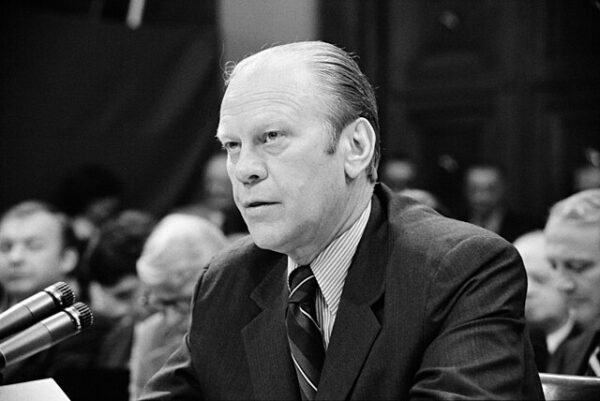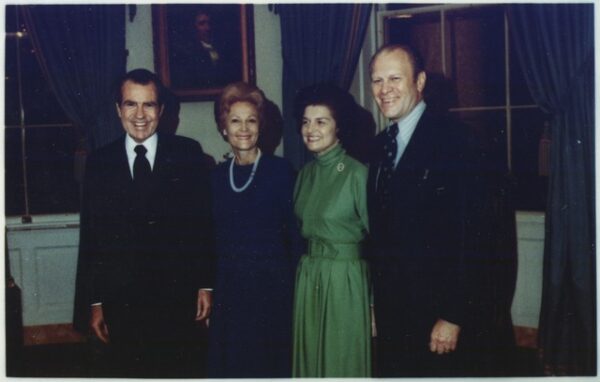On November 27, 1973, the United States Senate delivered an overwhelming bipartisan verdict—a 92–3 vote to confirm House Minority Leader Gerald R. Ford as Vice President of the United States—marking the first major invocation of the Twenty-Fifth Amendment’s Section 2 mechanism to fill a vacancy in the vice presidency. The House of Representatives would follow on December 6 with a similarly lopsided 387–35 vote, completing a process that placed Ford a heartbeat from the presidency at one of the most volatile moments in modern American political history.
The confirmation did far more than elevate a well-liked Midwestern congressman to the executive branch. It represented a constitutional stress test as Washington reeled from the cascading crises of late 1973: the Watergate scandal accelerating toward a constitutional confrontation, the “Saturday Night Massacre” still fresh in public memory, and a nation grappling with the OPEC embargo, spiraling inflation, and a pervasive sense of governmental disarray. That the process unfolded with procedural calm and overwhelming consensus is, in retrospect, one of the rare stabilizing episodes in a season marked by institutional strain.
Ford’s nomination on October 12 had followed Vice President Spiro Agnew’s resignation two days earlier, the result of a Maryland corruption investigation that ended the vice president’s career abruptly and ignominiously. President Richard Nixon—himself under intensifying legal and political scrutiny—needed a nominee who would be acceptable to both parties and capable of reassuring a country that increasingly doubted its leaders. Ford, then in his 25th year in the House and known for his unpretentious manner and bipartisan friendships, emerged immediately as the consensus figure.
The Twenty-Fifth Amendment, ratified in 1967, had been designed for precisely this scenario: a process allowing the president to nominate a vice president, with confirmation required by a majority of both chambers. Yet until Ford’s nomination, the amendment had never been put to the test. The stakes were higher than its framers likely imagined. With Nixon under threat of impeachment, whoever became vice president would almost certainly inherit the presidency if the scandal continued to deepen. Every senator and representative understood that confirming Ford was, effectively, selecting a potential president.
The Senate’s vote on November 27 reflected this gravity. Hearings before the Senate Rules Committee had been thorough but free of the acrimony that characterized so much else in Washington that year. Ford submitted years of tax returns, FBI background checks, and extensive documentation of his finances. Senators pressed him on executive privilege, the independence of the Justice Department, and the ongoing Special Prosecutor investigation. Ford’s unadorned answers—sometimes plodding, often earnest—reassured members across the ideological spectrum. He projected the image of a caretaker statesman: reliable, unthreatening, and conspicuously unconnected to the scandals engulfing the administration.
The three dissenting votes—cast by Senators Gaylord Nelson, Thomas Eagleton, and William Hathaway—reflected broader anxieties rather than personal objections to Ford. Some critics feared that confirming a vice president before resolving Watergate effectively insulated Nixon by guaranteeing continuity. Others argued that Congress should use the moment to assert institutional independence or to consider a broader restructuring of the executive branch. But these objections were ultimately marginal. The overwhelming majorities in both houses confirmed that the political class, despite its ideological fractures, preferred stability over experimentation.
Ford was sworn in as vice president on December 6, 1973. The choice proved consequential. Less than nine months later, Nixon resigned—the first and only president to do so—and Ford became the 38th President of the United States, inheriting the task of restoring public trust in the wake of the nation’s worst crisis of political legitimacy since Reconstruction.






